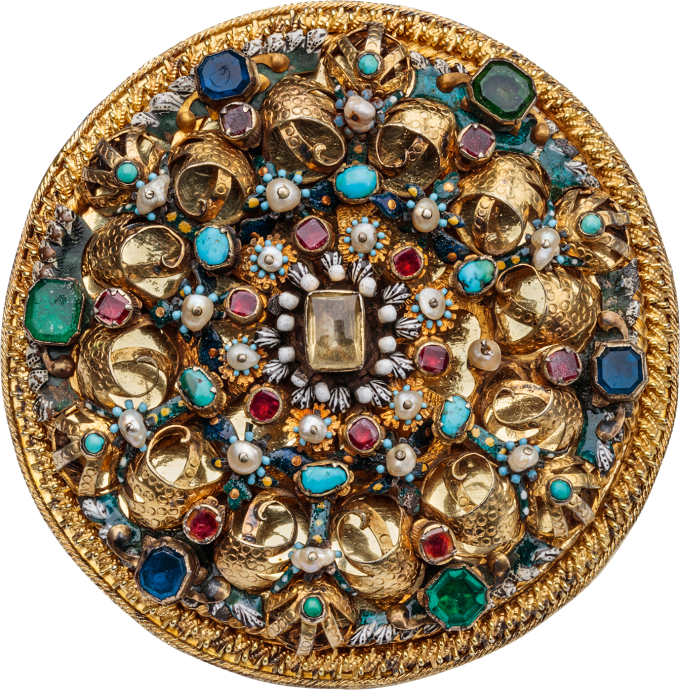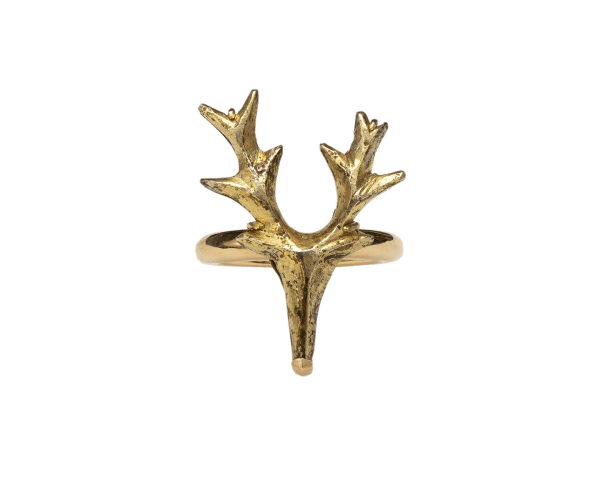


Breast Rosette signed by Andreas Gorgias
, c. 1680
Breast Rosette signed by Andreas Gorgias
Description
Clasps, large and small, were worn throughout the Middle Ages, when they functioned to close the ample mantles or cloaks thrown over closer-fitting dress. As fashions changed in the Renaissance, clasps went out of style, yielding space to varieties of chains, collars, and pendants adorning the bodice. The present huge bejeweled clasp, called a breast rosette (or Heftel in German-speaking lands) is a type favored by Saxon Transylvanian women. Worn medieval-style, it was either pinned to the front of the garment or hung from the neck with a velvet ribbon.
Signed on the reverse with the maker’s mark “AG“, this clasp is by Andreas Gorgias active in Brasov, which was then the capital of the Transylvanian Saxons. From a family of goldsmiths, he became a master in 1671 and was still working as late as 1691. Brasov enjoyed a key position on the trade route between East and West and, as such, became the center of goldsmith activity from as early as the twelfth century until well into the nineteenth century. During these years, the Hungarian kings invited workers from all over Germany to develop the craft and further its trade. The height of their activity was during the seventeenth century.
Of elaborate construction and teeming with gems, this gilt silver rosette is decorated with spiraling cones and foliage into which are set pearls, turquoises, garnets, and paste (green and blue glass). A repoussé border encircles the clasp, and a rectangular rock crystal marks its center. Our lavish breast rosette, and others like it also of Transylvanian origin, hearken back to late medieval versions, recalling especially those worn by high-ranking ecclesiastics.
Exhibition
Baltimore Museum of Art 1962-1968; see exh. cat. Renaissance Jewels and Jeweled Objects 1968 (not in catalogue).
Literature
Examples from the fifteenth century onward can be found in the Museum für Angewandte Kunst, Cologne (Chadour/Joppien 1985, nos. 524-526) and the Victoria and Albert Museum (Perry 2013, pp. 52 ff.). See also designs on secular silver of Transylvanian origin (Klusch 1988, pp. 25-29 and Simion 1990). A similar breast rosette signed by Johannes II Süssmilch, c. 1675, was New York, Christie’s 2011, lot 112 (for $62,500); see exh. cat. Baroque Goldsmiths and Jewelers 1993, no. 89 and passim for other related examples.
Provenance
Melvin Gutman Collection (1886-1967), sale New York, Parke-Bernet 1969, lot 17; Eugene Victor Thaw (1927-2018), sale New York, Christie’s 2018, lot 379.
